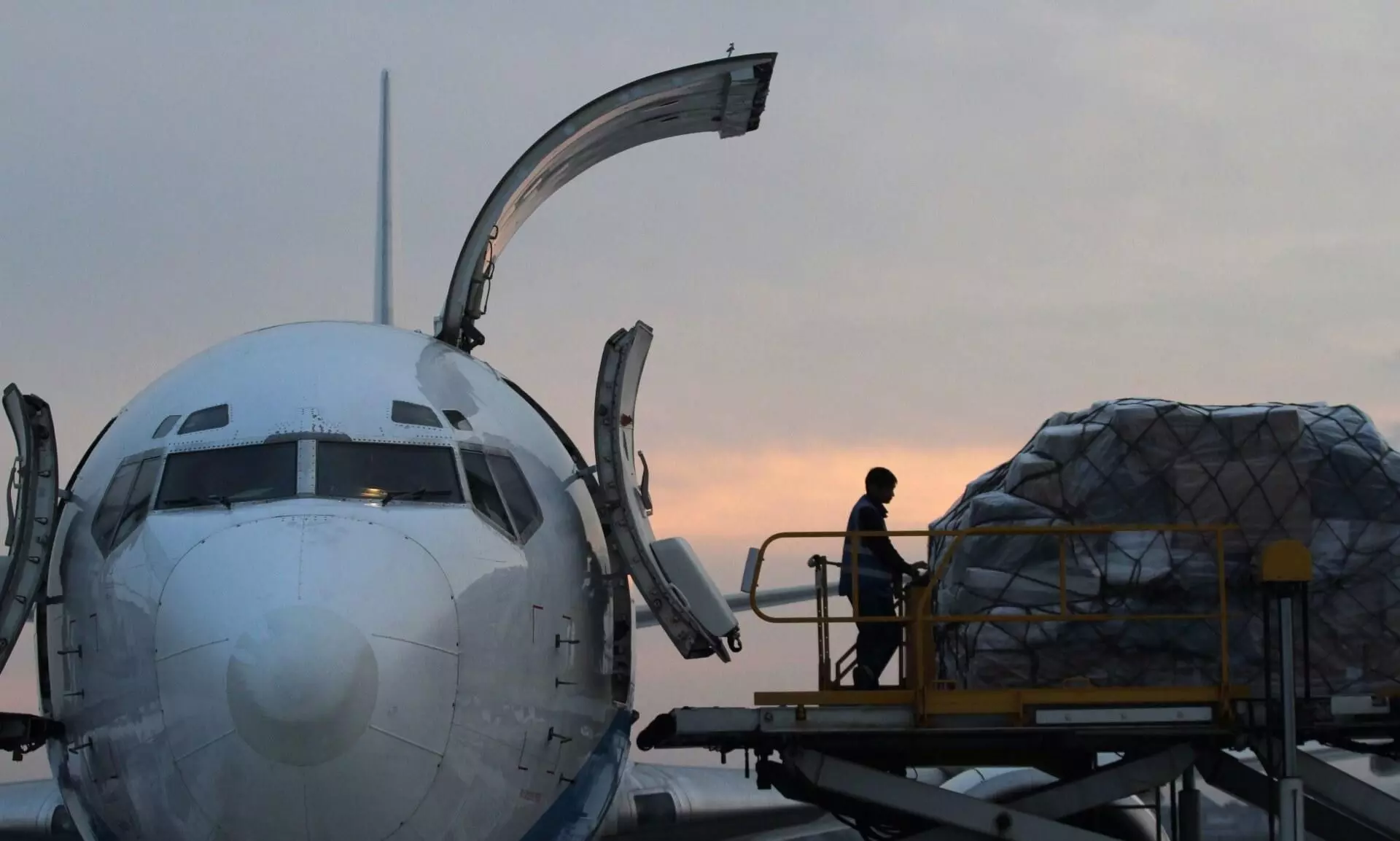
Cargo takes air, rail, road routes as Red Sea disturbs ocean

The Red Sea attacks by Houthis on ships have affected the entire global trade however it has also inspired logistics companies to come up with new solutions. A shift of shipments from the ocean to other modes including air is observed, especially in Asia to Europe movements. How long will it continue?
Global trade and the logistics ecosystem that enables it is going through a critical historical juncture as the movement of goods across the planet is getting disturbed by wars, politics and climate change.
In fact, The UN’s trade and development body, United Nations Conference on Trade and Development (UNCTAD), has raised an alarm on January 26, 2024, over escalating disruptions to global trade.
It reads, “Recent attacks on ships in the Red Sea, combined with geopolitical tensions affecting shipping in the Black Sea and the impacts of climate change on the Panama Canal, have given rise to a complex crisis affecting key trade routes.”
For instance, the Suez Canal handled approximately 12 to 15 percent of global trade in 2023. Due to attacks by Houthis on ships, several shipping lines have suspended their Suez Canal sailings and thus the trade volume going through this crucial trade route decreased by 42 percent over the last two months. The shipments are now instead moving through Cape of Good Hope which not only increases the transit time by two weeks but also swells the freight rate considerably.
The logistics companies are introducing innovative freight solutions connecting Asia and Europe as alternative services for customers to reduce lead times and costs.
For example, Bollore Logistics anticipated additional air freight capacity between mid-January and early February ex-China to Europe and on January 11, 2024, announced a new weekly B777 freighter between Shanghai PVG and Paris (CDG).
In the quarterly airfreight webinar held on January 31, 2024, chief airfreight officer of Xeneta Niall van de Wouw pointed out that Asia Pacific to the US and Asia to Europe airfreight rates were more or less in parallel up until January and could see the Asia to Europe increasing again, quite rapidly after the holiday season ended.
“Typically, January should be the slower season. Yes, there's always a run-up to the new year. But we often see the airfreight market take a deep breath after the holiday season,” he said.
Even though it is not unlikely because of the Lunar New Year coming up, this is related to the crisis in the Red Sea, he reported.
“On the ocean side, we see ripple effects across the Pacific. The rates are going up because the carriers need to re-deploy their ships. There's still a lot of confusion. On a broader level, we see rates recovering that quickly is a macro signal that companies are using airfreight more than anticipated because of the uncertainty on the ocean-front,” he said.
To prove his point, van de Wouw also took an example of Vietnamese air exports to Europe, which Xeneta indexed.
He said, “A few weeks before the Christmas holiday period, some apparel companies in Vietnam mentioned in our meetings that they have plans to use airfreight. There were plans but we didn't see the numbers. However, from the second week of January, we started seeing volumes, which we hadn't seen during the peak season.”
“It shows that volumes are 12 percent higher in the last week of January than at the end of October, which was the peak season for the Vietnam to Europe air cargo market. This is the clearest example of the Red Sea situation having an impact,” he added.
However, he also added that there is consensus that they don't expect this trend to last too long.
“The situation might last much longer. But once there is more reliability on the ocean side even though it might take two weeks longer, the need for air freight would become less for these companies because then they can depend more on the ocean,” he said.
Another important observation that he made was the relative cost difference between airfreight and ocean freight.
“A couple of weeks ago, airfreight was 23 times more expensive to move goods on a per kilo basis from China to Europe. But now it is only between five and six because of the increase in the rates on the ocean side and the decreasing rates on the air side,” he said.
Companies are looking for different options and alternatives, not just airfreight.
For instance, Kerry Logistics Network (KLN) reported in January 2024 that its sea-air and road-air freight services across Eurasia have recently garnered increased interest. These cargoes are transported by sea freight to Dubai followed by air transport to Europe, with operations centred at the Kerry Logistics Jebel Ali bonded facility in Dubai.
“The sea-air freight solution transports shipments from Chinese seaports to European airports within 16-21 days. This service is 40 percent cheaper than conventional air freight and up to 40 percent faster than sea freight,” it reads.
KLN also has road-air, all-road, and road-rail services spanning from China through Central Asia to Europe. “Road-air shipments are completed in 15-20 days, all-road in 20-25 days, and road-rail within 25-30 days, which is significantly faster than current sea freight times for similar routes,” it reads.
At the same time, Stephane Guesnier, chief operating officer of Asia-Pacific, Bollore Logistics, during a webinar on the Red Sea crisis on January 30, 2024, said that he observed a shift of orders from ocean freight to rail but didn't see such a massive transition to air freight.
However, he also said, “Although we don't see that massive shift of orders to airfreight, there will still be growing demand for air freight, for example, from the automotive sector.”
Meanwhile, Loic Gay, global chief operating officer of Bolloré Logistics pointed out the real effect of the Red Sea crisis on European industries having to stop their production. “Car manufacturers such as Tesla have had to suspend production due to lack of available parts,” he said.
Talking about other solutions they have implemented, Gay said, “In addition to the weekly aircraft charters that we have implemented, we have also beefed up our rail service from China to Central Europe. We can reach China to Europe within 18 to 20 days. We have also implemented the Sea-Air solution. You can ship by sea on the first leg from Asia into Dubai and from Dubai expedite the cargo to the airports of the destination in Europe with about 18 to 19 days transit time.”
As the situation may last for a while, Guesnier pointed out that it is essential for customers to share their orders and volume forecasts together with delivery dates and destinations. “With this data on hand, we can propose the best possible transport solution in terms of custody time and optimisation,” he said.
There are also cases of companies using airfreight charters to avoid the delays that can cause a stoppage on production lines.
For instance, the Denmark-based logistics company Blue Water Shipping recently reported an intervention to move a Red Sea-impacted time-sensitive shipment for a Floating Production Storage and Offloading (FPSO) project in China from Colombia.
“The shipment found itself stranded in Cartagena, Colombia, and the situation in the Red Sea made it impossible to reach China on schedule for the project. To facilitate the transition to air cargo, the cargo was loaded at Tocumen International Airport Panama due to customs considerations,” it reads.
The shipment also saw a change in the destination airport to Shanghai, as it encountered a challenge with the original landing permit in Qingdao days before the flight arrival.
Although there is some consensus about the Red Sea situation pushing shipments to air cargo, the size of this transfer and how long it will continue is doubtful. As the reliability on the ocean side normalises, shippers can easily go back to sea, the Red Sea crisis is making no structural change for air cargo as we observe it today. However, both shippers and logistics companies need to stay vigilant as the geopolitical situation at these crucial trade routes remains volatile and continues to be affected by wars, politics and climate change.
This was originally published in the February 2024 issue of The STAT Trade Times.

